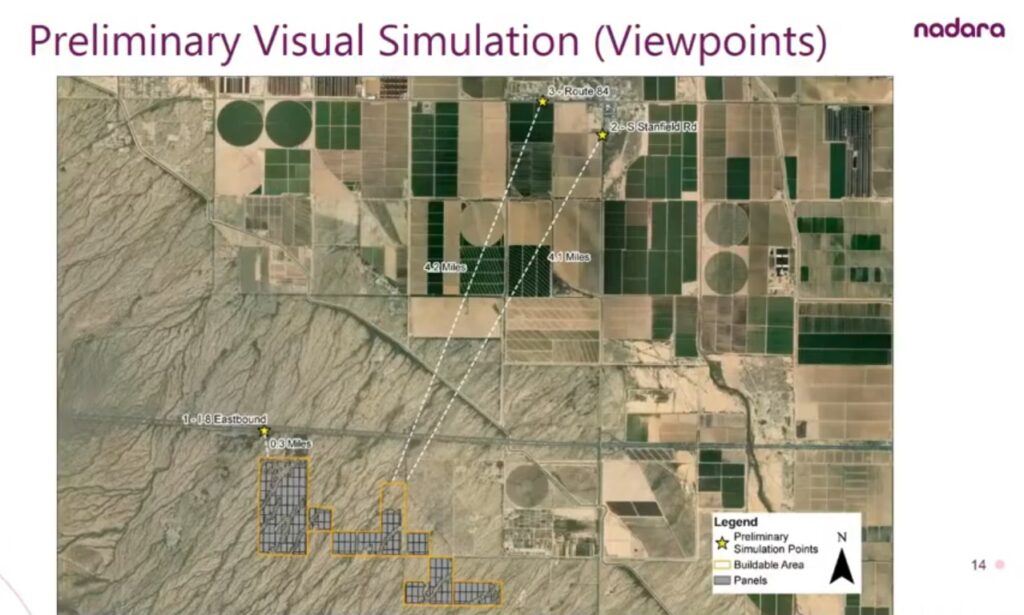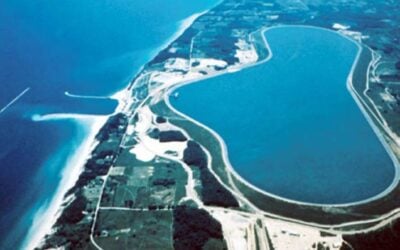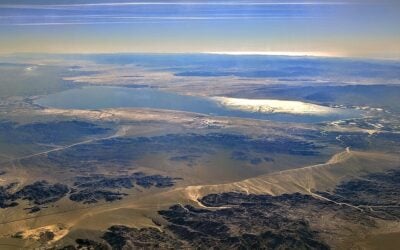
The US development arm of Milan, Italy-headquartered developer Nadara has encountered a setback in its pursuit of a 200MW hybrid BESS destined for Arizona.
During a recent Pinal County Planning & Zoning (P&Z) meeting, officials unanimously recommended to deny the developer’s application for a major comprehensive plan amendment.
This denial follows on from a vote by the county’s Citizens Advisory Committee (CAC), which also recently and overwhelmingly recommended that its Board of Supervisors deny the application.
Nadara asked for amendment to land use designation
Independent power producer (IPP) Nadara is proposing to construct a 150MW solar farm paired with a 200MW BESS, known as the Silver Reef Energy project, located approximately 6.5 miles southwest of Casa Grande across 801 acres of unincorporated Pinal County.
Try Premium for just $1
- Full premium access for the first month at only $1
- Converts to an annual rate after 30 days unless cancelled
- Cancel anytime during the trial period
Premium Benefits
- Expert industry analysis and interviews
- Digital access to PV Tech Power journal
- Exclusive event discounts
Or get the full Premium subscription right away
Or continue reading this article for free
In order to commence construction of the project, Nadara is seeking approval to amend the land use designation from very low density residential to green energy production. The actual project site area was formerly a target bombing range during World War II which underwent federal and environmental review.
The project is expected to connect to Arizona Public Service’s (APS’s) electricity grid via its Santa Rosa – Tat Momoli 230kV transmission line.
Although the project is now under control by Nadara, documents filed with the Arizona Corporation Commission (ACC) show that the business subsidiary for the project, Silver Reef Energy, LLC, was incorporated by Novis Renewables.
Company rep highlighted safety record of LFP BESS technology
During the recent P&Z meeting, company representatives highlighted the reasons why it felt the site to be suitable for solar and energy storage development, including the opportunity to “transform a former restricted military training area into a productive source of renewable energy, supporting responsible land use”.
However, the meeting then took a turn for the worse from Nadara’s perspective as the company’s senior development manager, Kiersten Stanley, attempted to alleviate concerns surrounding the project, which were raised during the previous CAC meeting.
Along with potential environmental impacts, water usage and proximity to residences, the conversation also centred around fire safety, which Stanley explained is a concern they hear about “all the time with BESS across the nation.”
With an increasing number of developers adopting BESS as part of renewable energy projects, coupled with a handful of recent high-profile battery fires, planning officials have become more aware (and sometimes more wary) of the technology over the past year.
With this in mind, developers and utilities throughout North America are now focusing heavily on BESS safety when engaging with local communities. As recently reported by Energy-Storage.news, this includes Dominion Energy in Virginia, Terra-Gen in New York, Aypa Power in Indiana, along with many others.
“There are different lithium-ion chemistries: NMC, which was used up until about 2022, and now [as an industry] we’ve switched over to LFP,” explained Stanley during the recent P&Z meeting.
Despite offering a lower energy density, LFP-based systems have a longer lifespan than nickel manganese cobalt, cost less and crucially, have a lower risk of thermal runaway.
“I don’t know of any documented cases of an LFP system catching on fire,” said Stanley.
“All these systems that you’re seeing which are catching fire, Moss Landing, Escondido, there have been so many, well not that many, [but] over the past five years they’ve all been using NMC technology,” said the Nadara development manager, albeit rather unconvincingly.
Commissioners question Nadara’s preparedness
The conversation during the recent P&Z meeting naturally turned to firefighting measures, with Stanley briefly explaining the protocol for emergency response staff in the event of a battery fire.
“If one of these bad boys catches fire, you let it burn,” said Stanley, before passing on a series of questions delivered by commissioners focusing specifically on battery technology.
“I don’t think I’m the proper individual for that, I honestly think we would need a fire industry expert,” said Stanley.
“You’re in front of us today to promote this project, you need to come prepared,” said one commissioner in response to this statement.
Stanley explained that the company had held Q&A sessions specifically for this purpose, in order to make the community comfortable with the technology and to alleviate any fears.
Despite this, in weighing up their decision, one commissioner made their feelings abundantly clear, saying that they need to be able to justify why they’re recommending to approve certain projects.
“That’s where I get caught, in the grocery store, or on social media … I have to justify [my recommendation] too … several of these questions that have come up … I implore you to have these answers [next time] and have the people here to answer direct purposeful questions because you’ll hear them again, I guarantee it,” said the commissioner.
With this in mind, the P&Z commission ultimately voted 8-0 to deny recommendation of Nadara’s application.
The final decision to approve sits with the Pinal County Board of Supervisors, which appoints the P&Z commission. The Board is scheduled to vote on Nadara’s proposal during its 19 November 2025 meeting. If approved, the developer hopes to commence construction on the project sometime during 2028.
Meanwhile, the following day, 20 November, the county’s P&Z commission is due to vote on requests for land use amendments pertaining to a 400MW standalone BESS project from developer esVolta.
The Town Council of Florence, where esVolta’s Lighthorse Energy Storage project would be built, voted unanimously 7-0 in August to adopt a general plan amendment changing the site from suburban neighbourhood to industrial designation and to amend development plans for an agricultural site to permit the development of BESS on it, local newspaper Pinal Post reported on 11 August.
Additional reporting by Andy Colthorpe.





